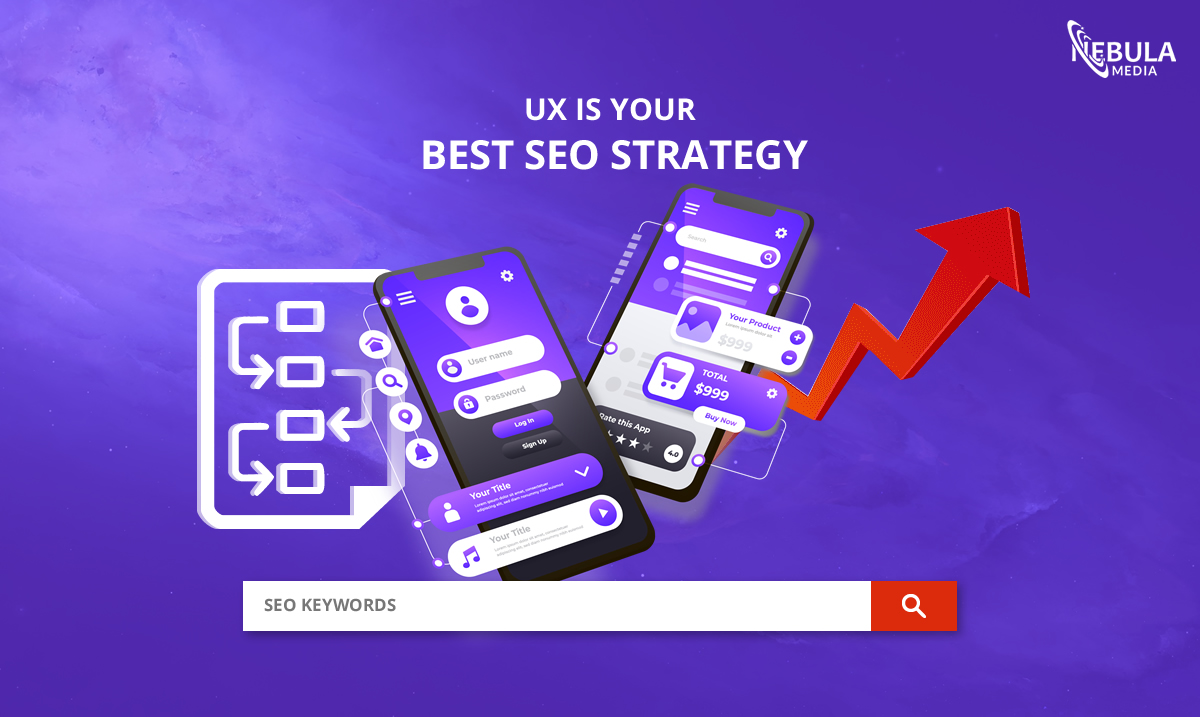UX is Your Best SEO Strategy
UX (user experience), in the most recent technological era, is becoming a more crucial element of SEO. Design initiatives that put the user experience (UX) first are now essential to limiting user tension and annoyance when they visit your site. Although early UX initiatives primarily focused on website and page loading speed, the field has since expanded. Sites now require comprehensive UX strategy plans to optimise content impact, improve site performance, and tempt users to return.
In this post, we will be covering:
- What is UX, and its importance in SEO?
- Why is UX relevant to SEO?
- How to incorporate UX into an SEO campaign
UX (user experience), in the most recent technological era, is becoming a more crucial element of SEO. Design initiatives that put the user experience (UX) first are now essential to limiting user tension and annoyance when they visit your site. Although early UX initiatives primarily focused on website and page loading speed, the field has since expanded. Sites now require comprehensive UX strategy plans to optimise content impact, improve site performance, and tempt users to return.
What is UX?
UX, short for user experience, has a marketing purpose. UX strategy assists in solving problems such as highlighting every potential website issue and balancing the demands of various users by recognising which features have the greatest influence on global user experience. Moreover, which operations need the most improvement? And how will available technology and limited resources help achieve the end goal?
UX focuses on:
- Visitor flows
- Compatible mobile and desktop layouts
- Site design and architecture
UX Strategy Components
- Long-Term Target
- Innovation
- Customer Oriented Research
- Design and Aesthetics
Why does UX matter for SEO?
Marketers frequently emphasise the importance of audience comprehension, particularly in search marketing. The hues, fonts, layouts, messaging, and other design components should all be customised for your target audience.
Google has recently started considering page load time when evaluating a website’s performance. Page speed helps draw visitors, but it is insufficient to keep them there. Any good reputation you’ve gained due to faster load times vanishes immediately if pages don’t load completely, navigation is difficult, or there are too many ads
A strong UX strategy is needed to improve sales and customer loyalty.

For Example
An excellent example of UX is the Google search page. It’s convenient to use and does the job as expected. Although there are links to Gmail, Google Images, and your Google Account, the page is mostly empty.
Improving Your UX Strategy
In a recent study, it was discussed how many UX initiatives give the impression of careful research and a thorough design process. But the majority of UX efforts fall short. To ensure that the UX strategy achieves the desired results, follow these three steps:
1. Analyse the present situation
Start by evaluating the UX efforts that are currently being made throughout your website. Determine what’s progressing, what isn’t, and what modifications should be made right away.
2. Determine definite goals
For instance, if there is trouble using your existing WordPress menu, start there. Make small adjustments and concentrate on finding a solution that
3. Make a route plan
After identifying UX objectives, you’ll need a step-by-step strategy to address them. Select the tool that helps you achieve the goal.
4. Markers of Significant Experience
Metrics are crucial for monitoring page speed, SEO, conversion rates, and user experience. To evaluate the results of your UX attempts and the deadlines from your UX strategic plan, use the following key experience markers:
- Overall Traffic Data
- Social Media Interaction
- Email Signups
- Feedback
How to incorporate UX into an SEO campaign ?
To integrate UX best practices into client campaigns, we developed a process.
There are two stages for incorporating UX into SEO Campaign:
- Select keywords that are precise to your service and that your customers are inclined to use at every phase of their purchasing journey.
- Incorporate those keywords into the information that most closely corresponds to each phase, from the initial search queries to the conversion phase.
Advertising campaigns’ quality scores are calculated using:
- The anticipated click-through rate
- Advertisement Significance
- Webpage experience
A high-level breakdown of this procedure is as follows:
1. Keywords and Mapping
Your website must provide the proper customer experience for the keywords you’re aiming for. The process starts with choosing the appropriate keywords and ends with knowing how to use them.
2. URL structure
A rich, beneficial user experience is necessary if you want to rank high along with competitive keywords. Launching a single landing page is insufficient to achieve a position in search results. You need to design a structure that can support it.
3. Effective User Interactions
The majority of UX decisions are based on logic. You can determine what the ideal experience is by having discussions with your team and customers. The more people who participate in the discussion, the more opportunities for better keyword suggestions.
Final Thoughts
An integrated model is used in SEO and UX, starting with studies, continuing with creation and delivery, combined with regular analysis, and ending with research once more. Looking back at previous SEO upgrade algorithm signals, it is clear that SEO and UX are collaborating to reach mutual experience outcomes. Understand your target audience and interact with them with SEO and enhance your website’s customer experience with UX. You could also just hire us to take care of it.
Do you need a bespoke UX design for your website? Contact us at 0800 118 2788


